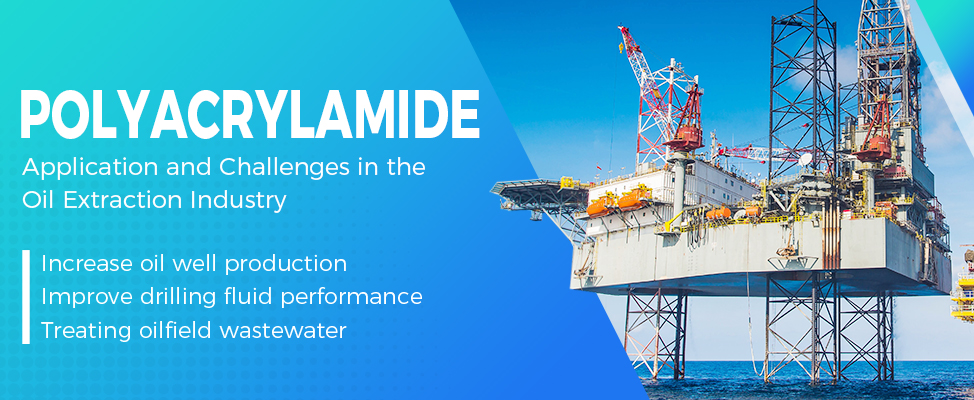
Polyacrylamide (PAM) is a high molecular weight polymer with excellent flocculation, thickening, and stabilizing properties. It is widely used in water treatment, wastewater treatment, and various industrial fields.👉 link to Polyacrylamide (PAM) Product Details
In the oil extraction industry, PAM plays a critical role in fracturing fluid preparation, oilfield water treatment, and wastewater management, helping improve extraction efficiency while reducing environmental risks.
Fracturing Fluid Preparation
√ Application: PAM is used as a thickener in fracturing fluids, enhancing viscosity to carry sand and chemicals into underground oil and gas formations.
√ Effect: By thickening the fluid, PAM improves stability under high pressure and maximizes oil and gas production.
Oilfield Water Treatment
√ Application: Produced water from oilfields contains oil, solids, and chemicals. PAM acts as a flocculant to remove suspended solids and emulsified oil.
√ Effect: Significantly improves water quality, enabling recycling and reducing environmental pollution.
Oilfield Wastewater Treatment
√ Application: Oil extraction generates large volumes of wastewater containing oil, chemicals, and solids. PAM is applied for flocculation and sedimentation to remove contaminants.
√ Effect: Enhances wastewater treatment efficiency and minimizes environmental risks.
Stability in High-Salinity Environments
√ Challenge: High salinity in oilfield water reduces PAM efficiency.
√ Solution: Development of salt-resistant petroleum-specific PAM improves performance in saline conditions.
Environmental Risks
√ Challenge: Although PAM is generally eco-friendly, its slow degradation may pose risks if not managed properly.
√ Solution: Proper dosage and disposal methods help minimize environmental impact.
Cost Concerns
√ Challenge: Large-scale PAM usage increases operational costs for oil companies.
√ Solution: Optimized dosing and formulations can balance performance with cost-effectiveness.
Formula Optimization
√ Challenge: Different oilfield environments and water qualities demand customized PAM formulations.
√ Solution: Tailoring molecular weight, ionic type, and solubility ensures maximum efficiency.
PAM is essential for the oil extraction industry, improving both efficiency and sustainability in fracturing fluid preparation, oilfield water treatment, and wastewater treatment.
Although challenges remain—such as salinity tolerance, cost, and environmental concerns—our petroleum-specific PAM products offer enhanced stability and performance.
👉 link to More about polyacrylamide (PAM)
Q1: What is the role of PAM in fracturing fluid preparation?
A1: PAM works as a thickener, enhancing fluid viscosity to carry sand and chemicals effectively, boosting fracturing efficiency.
Q2: Why is PAM used in oilfield water treatment?
A2: PAM quickly flocculates and removes suspended impurities and oil, improving water quality for reuse and reducing pollution.
Q3: Does high salinity affect PAM performance?
A3: Yes, salinity can reduce PAM efficiency. However, our salt-resistant petroleum-specific PAM is designed for such environments.
Q4: Is PAM too expensive for large-scale oilfield applications?
A4: While cost is a concern, optimized dosing strategies and tailored formulations can significantly reduce expenses.
Q5: How to select the right PAM for oil extraction?
A5: Selection depends on water quality, reservoir conditions, and operational needs. We recommend consulting with suppliers for customized solutions.

Please contact us for free quotation by form below. We promise the quickest response within 24 hours: